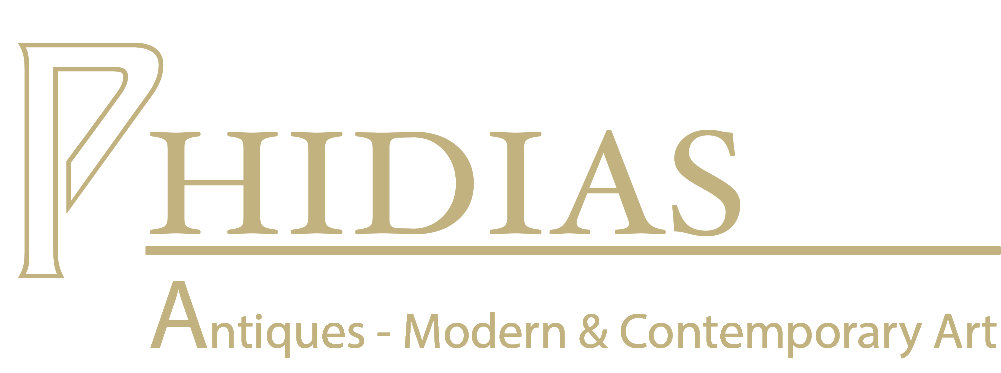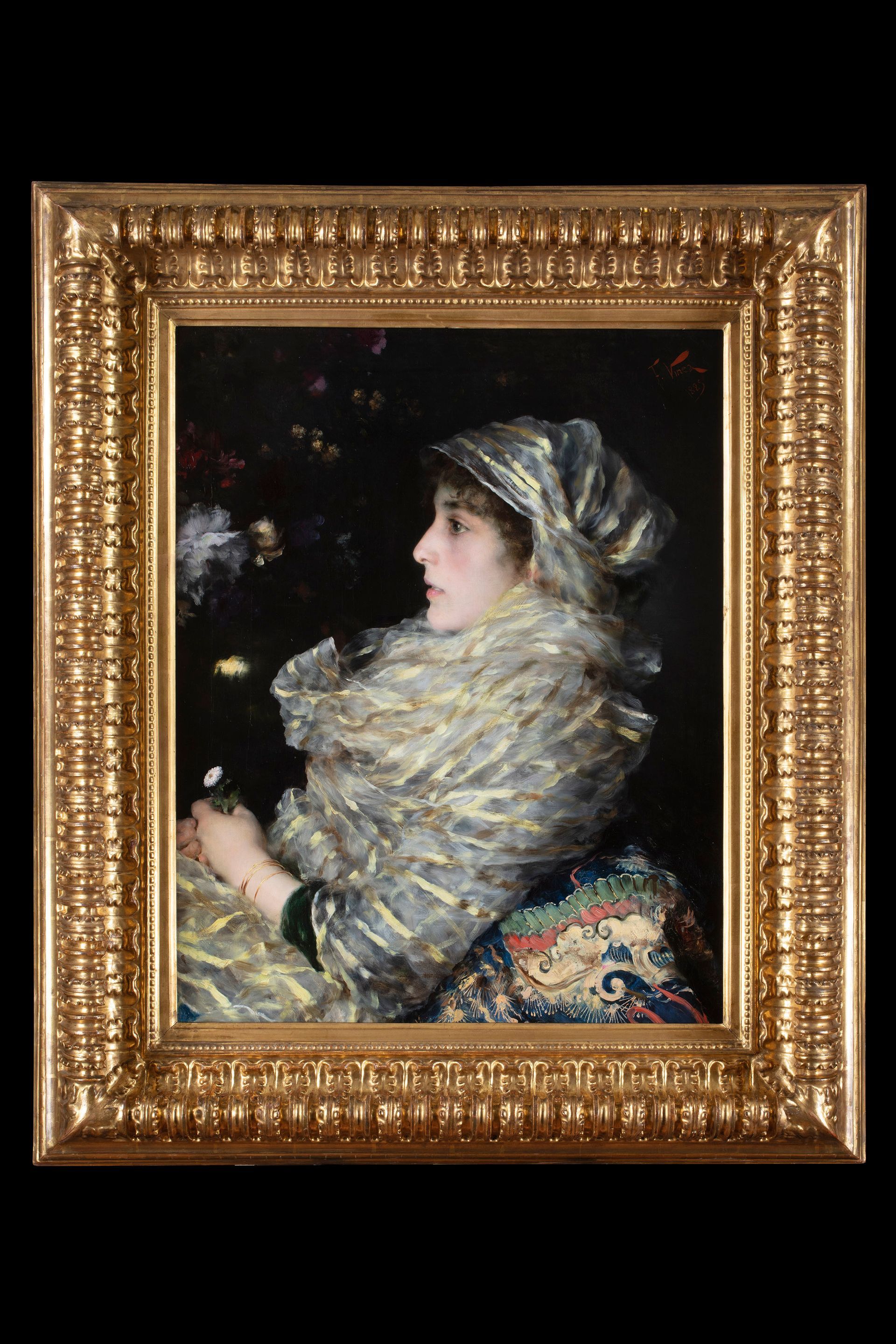Hermann Corrodi
Hermann Corrodi (Frascati, 23 July 1844 - Rome, 30 January 1905)
Via di San Giovanni in Laterano with a glimpse of the Colosseum
Oil on canvas, 166x100.5 cm
The painting with abraded signature, depicting a glimpse of the Colosseum from via San Giovanni in Laterano, is based on the stylistic analysis to be placed in relation to the production of works of Roman subjects by Hermann Corrodi.
Roman artist but with a cosmopolitan vocation, Corrodi occupies a decidedly eccentric place within the Capitoline artistic panorama. Initiated to painting by his father Salomon, a Swiss landscape painter of distant Italian origins active in Rome since 1832, and encouraged by the latter to make experiences abroad, he attended the studios of Alexandre Calame and Jacques Alfred van Muyden in Geneva, showing from the very beginning evidence of a preference for the landscape. If in the Eternal City the artist is linked to the Deutsche-Römer community, it is however the contacts established during some stays beyond the Alps that orient his activity in an international way. In fact, in Paris he attended the studios of Ernest Meissonier and Jean-Léon Gérôme and met the merchants Adolphe Goupil and François Petit. In England he also received a warm welcome in the studio of Lawrence Alma Tadema and met some of the major protagonists of English painting, including Frederic Leighton and John Everett Millais. Restless traveler, Corrodi followed in the footsteps of eighteenth-century tourists visiting the most picturesque Italian towns; beyond the Alps, he moves between Switzerland, Germany, France, England, and, in the wake of orientalist vogue, he explores the exotic countries of the Mediterranean. Much loved by wealthy European and American collectors, he exhibited his works in the main international exhibitions, established relations with the courts of the time, in particular with the English one, and even with the Khedivè of Egypt, while maintaining his residence and his I study in Rome. Two other studios are strategically opened in the heart of Central Europe, first in Baden Baden and then in Hamburg. Its remarkable fortune, well documented by the international press between the nineteenth and twentieth centuries, is reflected in a decidedly abundant production, but difficult to date. In fact, his paintings replicate subjects of particular fortune several times over time and rarely bear the date, thus making the definition of a chronological path complex. Some characters, however, constitute a stylistic code that allows us to identify his production in an unmistakable way, which from the very first works moves away from the naturalistic vocation with intentions of documentary fidelity typical of the tradition of the Grand Tour to arrive, through the poetic filter of vision boeckliniana, towards an interpretation of the landscape full of lyrical and emotional suggestions. Here the peculiar Nordic-style sensitivity finds masterful expression through an extraordinarily effective scenographic direction based on a series of recurring elements: the perspective expansion, first of all, and then the wide breath of the spaces, with a taste for long shots and views from below, able to give the main elements of the image an unprecedented emotional significance; the insertion of small figures, sometimes even out of scale, which reinforce the majesty of the natural and architectural scenarios; the agreement between the magnificence of the natural scenery and the solemnity of the vestiges of the past; the talent for the finest chromatic combinations, for the fading lights, for the atmospheric transparencies, certainly studied from life but then wisely reconstructed inside the studio, according to an ancient tradition technique. In the work in question, the amphitheater is taken from via di San Giovanni in Laterano, one of the main urban arteries until the end of the nineteenth century, theater of papal processions between the Vatican and the Lateran, as well as an axis connecting the city center with the Castelli Romani. On the right we can recognize the bell tower and the side portal of the basilica of San Clemente inserted within a fanciful architectural complex. It should be noted that compared to the real topography of the place, the length of the road is decidedly shortened in order to make the profile of the Colosseum more majestic. The lowered point of view amplifies the breath of the image and the lateral wings accentuate the sense of spatial escape by channeling the gaze towards the grandeur of the monument which, flooded with light, reveals itself in the background like an apparition. As in his best works, the artist from here shows off his skills as a skilled scenographer in the orchestration of the contrast between shadow and light, giving maximum prominence to the subtle fading of the vast evening sky furrowed with clouds on which, on the left, with a remarkable result suggestion, the fronds of a Mediterranean pine stand out, this is also a recurring solution. In the foreground, the road is animated by the passage of commoners educated in different attitudes (the cart loaded with people, the man on horseback, the women with clothes in the field or with children in their arms), according to that taste for Roman customs very much alive in those years both in the painting of the Deutsch-Römer and in that of the pensionnaire of the French Academy. The figures are quickly sketched in a manner typical of his production.
The subject must have met with some success, as evidenced by the existence of at least two other almost identical versions although of slightly smaller sizes. On the other hand, as the artist is well known, gratified by considerable market appreciation, he made numerous replicas of his works by varying sizes and sometimes lights and compositional elements.
Teresa Sacchi Lodispoto
Sabrina Spinazzè
Related works
Share on your social profile
Contact us for information regarding the work on display
Fill out the form or call to arrange a meeting Mobile 39 335 8125486 Mobile 39 335 7774612

Opening time
- Monday
- - -
- Tue, Wed, Fri
- - -
- Thursday
- -
- Saturday
- - -
- Sunday
- Closed
Via Roma, 22 / a, 42100 Reggio Emilia RE
contact info
Ph. 39 0522 704575
Mobile 39 335 8125486Mobile 39 335 7774612
Follow us also on social networks
Sign up to our newsletter
and stay informed



























